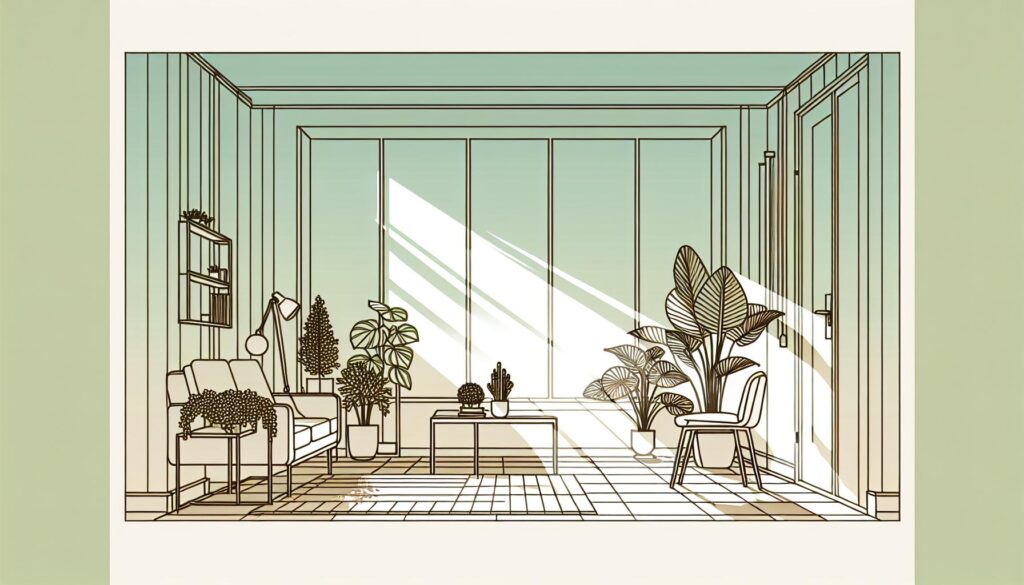As a seasoned design enthusiast, I’ve always been drawn to the elegance and functionality of minimalist design. When it comes to small spaces, the principles of minimalism can truly work wonders in creating a harmonious and uncluttered environment. In this article, I’ll share my insights on how to maximize space and style through minimalist design for small spaces.
Embracing minimalist design doesn’t mean sacrificing personality or comfort. It’s about cleverly utilizing space, incorporating multifunctional furniture, and focusing on essential elements that bring a sense of calm and openness to a room. Join me as we explore the art of minimalist design and discover how simplicity can transform even the tiniest of spaces into inviting and aesthetically pleasing sanctuaries.
Understanding Minimalist Design for Small Spaces
When it comes to designing small spaces, minimalism is not just a style choice; it’s a practical approach that can work wonders. Minimalist design focuses on simplicity, functionality, and creating a sense of openness, making it ideal for maximizing limited space. Embracing minimalism means stripping down to the essentials, decluttering, and incorporating clean lines and natural light to enhance the overall look and feel of a room.
In the realm of small space design, every piece of furniture matters. Opting for multi-functional pieces like storage ottomans, wall-mounted desks, or sofa beds can help save space and reduce visual clutter. Additionally, when choosing colors and textures, sticking to a neutral palette can create a cohesive and calming atmosphere while making the space appear larger and more inviting.
One key aspect of minimalist design for small spaces is smart storage solutions. Utilizing hidden storage, such as built-in cabinets, under-bed drawers, or floating shelves, can keep belongings out of sight and maintain a clean, uncluttered look. Organizational systems and dual-purpose furniture are also essential in making the most of every inch available, ensuring both functionality and aesthetics are well-balanced.
Benefits of Minimalist Design in Small Spaces
When it comes to minimalist design in small spaces, the benefits are numerous and impactful. Here are some reasons why embracing this design approach can transform your compact living area:
- Maximizes space: By utilizing clean lines and clutter-free environments, minimalist design creates an illusion of spaciousness in small areas.
- Promotes relaxation: A minimalist space with uncluttered surfaces and simple furniture can have a calming effect on the mind, helping you unwind after a long day.
- Enhances functionality: Multi-functional furniture and smart storage solutions are key components of minimalist design, ensuring that every element in your space serves a practical purpose.
- Increases natural light: With minimalist decor and unobstructed layouts, natural light can flow freely throughout the room, making it feel brighter and more inviting.
- Easy to maintain: Simplifying your living space through minimalist design makes it easier to clean and organize, saving you time and effort in the long run.
- Encourages mindfulness: Living in a minimalist environment encourages you to be more conscious of your belongings and how you use your space, promoting a sense of mindfulness in your daily life.
Embracing minimalist design in small spaces not only creates a visually appealing and harmonious environment but also enhances the functionality and livability of your home.
Maximizing Space with Minimalist Design Strategies
When it comes to small spaces, maximizing space is crucial. As I’ve experienced, minimalist design strategies play a key role in achieving this goal. By decluttering and choosing multifunctional furniture pieces, I’ve been able to make the most of every inch in my own home.
One key strategy is opting for sleek furniture with hidden storage such as storage beds and ottomans. These pieces not only serve their primary function but also provide extra space to keep items out of sight, helping maintain a clean and organized environment.
Another effective technique is to utilize vertical space by installing shelves or wall-mounted cabinets. This not only enhances storage capabilities but also draws the eye upward, creating the illusion of a larger area.
In my experience, maintaining a neutral color palette is also essential in maximizing space. Light and airy colors such as white, cream, or soft gray can reflect light and make a room feel more spacious. Avoiding dark colors, which can make rooms feel smaller, is a crucial part of creating an open and expansive feel in a small living area.
By implementing these minimalist design strategies, I’ve been able to transform my small space into a functional, stylish, and open environment that truly maximizes every square foot.
Incorporating Multifunctional Furniture in Small Spaces
When it comes to designing small spaces, incorporating multifunctional furniture is a game-changer. The beauty of multifunctional furniture lies in its ability to serve dual purposes without sacrificing style or comfort.
In my experience, opting for pieces like sofa beds, storage ottomans, or extendable dining tables can maximize functionality while minimizing clutter. These pieces effortlessly transform your space to fit your needs, whether you’re entertaining guests or seeking relaxation.
Moreover, hidden storage compartments in furniture are a godsend in small spaces. They provide a stylish solution for stashing away items like extra pillows, blankets, or seasonal decor without adding visual bulk. I’ve found that embracing furniture with hidden storage not only optimizes space but also maintains a clean aesthetic.
Another favorite of mine is wall-mounted desks that double as shelves. These innovative pieces are perfect for creating a compact workspace that can easily be tucked away when not in use. The versatility they offer is unmatched, making them a must-have for small space living.
In essence, incorporating multifunctional furniture in small spaces is the key to effortlessly blending style and practicality. By choosing pieces that serve multiple functions and provide storage solutions, you can enhance functionality while maintaining a minimalist aesthetic.
Essential Elements for Creating a Calm and Open Space
When it comes to creating a calm and open space in a small area, there are key elements that play a crucial role in achieving this goal. As someone who appreciates the beauty of minimalist design, I rely on these essentials to transform compact rooms into peaceful retreats. Here are some vital components to consider:
- Neutral Color Palette: Opting for soft, neutral colors like whites, creams, and light grays can instantly make a space feel larger and more serene. I find that these hues create a timeless and tranquil atmosphere that promotes relaxation.
- Natural Light: Maximizing natural light is essential for enhancing the sense of openness in a room. I always aim to keep window areas clear and use sheer curtains to allow sunlight to filter through, filling the space with warmth and brightness.
- Decluttered Surfaces: Embracing a minimalist approach to decor means keeping surfaces free of clutter. I prioritize clean lines and only display items that serve a functional or aesthetic purpose, helping to maintain a sense of peace and organization.
- Incorporating Greenery: Bringing plants into the space not only adds a touch of nature but also contributes to a calming environment. I love to include low-maintenance plants like succulents or a snake plant to add a pop of greenery and improve air quality.
By focusing on these essential elements, I’ve found that creating a calm and open space in a small area is not only achievable but also incredibly rewarding. Each component works harmoniously to cultivate a peaceful oasis that promotes relaxation and clarity.
Key Takeaways
- Minimalist design in small spaces focuses on simplicity, functionality, and openness to maximize limited space.
- Utilize multifunctional furniture pieces and stick to a neutral color palette to create a cohesive and calming atmosphere in small spaces.
- Smart storage solutions like hidden storage, organizational systems, and dual-purpose furniture are essential for maintaining a clutter-free look.
- Benefits of minimalist design in small spaces include maximizing space, promoting relaxation, enhancing functionality, increasing natural light, and encouraging mindfulness.
- Maximize space with minimalist design strategies by decluttering, choosing multifunctional furniture, utilizing vertical space, and maintaining a neutral color palette.
- Incorporating multifunctional furniture such as sofa beds, storage ottomans, and wall-mounted desks can enhance functionality while maintaining a minimalist aesthetic in small spaces.
Conclusion
Creating a serene and airy ambiance in small spaces is achievable through strategic design choices. By embracing a neutral color scheme, harnessing natural light, maintaining clutter-free surfaces, and integrating greenery, one can cultivate a tranquil oasis. These key elements harmonize to elevate compact areas into havens of peace and serenity, fostering a sense of calm and mental clarity. Embracing minimalist design principles empowers individuals to optimize their living spaces, promoting a lifestyle of simplicity and relaxation.



